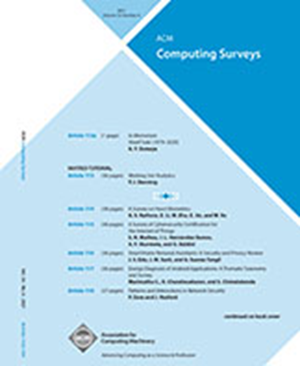认知软件工程任务中的脑电微状态分析研究:系统映射研究与分类
IF 28
1区 计算机科学
Q1 COMPUTER SCIENCE, THEORY & METHODS
引用次数: 0
摘要
执行软件工程(SE)任务需要激活软件开发人员的大脑神经网络。脑电微态分析是一种很有前途的神经生理学方法,可以在高时间分辨率下研究大脑网络的时空动态。脑电图微状态代表了多通道脑电图记录上的独特电位形貌。然而,学术界忽视了对已发表的与SE相关的脑电微态分析研究进行分类。因此,对最新研究的仔细理解仍然是有限的和不确定的。本文旨在对认知SE任务中脑电微状态分析的研究进行分类。我们进行了一项系统的地图研究,遵循完善的指导方针来回答十个研究问题。经过仔细筛选,从8个电子数据库中筛选出54篇初步研究(共1.545篇)。主要结果是,大多数初级研究侧重于揭示大脑动力学,探索广泛的EEG微状态应用背景和实验任务,在受控环境中进行实证研究,使用K-means作为聚类方法,应用基于ica的策略过滤伪影,如肌肉活动和眨眼。然而,目前尚无研究将EEG微状态分析应用于SE,这一研究存在很大的空白,需要进一步的研究。最后,本文提出了一种分类分类法,并指出了主要挑战和未来的研究方向。本文章由计算机程序翻译,如有差异,请以英文原文为准。
Investigating EEG Microstate Analysis in Cognitive Software Engineering Tasks: A Systematic Mapping Study and Taxonomy
Performing software engineering (SE) tasks requires the activation of software developers’ brain neural networks. Electroencephalography (EEG) microstate analysis emerges as a promising neurophysiological method to investigate the spatiotemporal dynamics of brain networks at high temporal resolution. An EEG microstate represents a unique topography of electric potentials over the multichannel EEG records. However, academia has neglected classifying published studies on EEG microstate analysis related to SE. Hence, a careful understanding of state-of-the-art studies remains limited and inconclusive. This article aims to classify studies on the EEG microstate analysis in cognitive SE tasks. We conducted a systematic mapping study following well-established guidelines to answer ten research questions. After careful filtering, 54 primary studies (out of 1.545) were selected from 8 electronic databases. The main results are that most primary studies focus on revealing brain dynamics, exploring a wide range of EEG microstate application contexts and experimental tasks, running empirical studies in a controlled environment, using K-means as a clustering method, applying ICA-based strategy to filter artifacts, such as muscle activity and eye blinks. However, No study has applied EEG microstate analysis to SE, highlighting a significant gap and the need for further research. Finally, this article presents a classification taxonomy and identifies critical challenges and future research directions.
求助全文
通过发布文献求助,成功后即可免费获取论文全文。
去求助
来源期刊

ACM Computing Surveys
工程技术-计算机:理论方法
CiteScore
33.20
自引率
0.60%
发文量
372
审稿时长
12 months
期刊介绍:
ACM Computing Surveys is an academic journal that focuses on publishing surveys and tutorials on various areas of computing research and practice. The journal aims to provide comprehensive and easily understandable articles that guide readers through the literature and help them understand topics outside their specialties. In terms of impact, CSUR has a high reputation with a 2022 Impact Factor of 16.6. It is ranked 3rd out of 111 journals in the field of Computer Science Theory & Methods.
ACM Computing Surveys is indexed and abstracted in various services, including AI2 Semantic Scholar, Baidu, Clarivate/ISI: JCR, CNKI, DeepDyve, DTU, EBSCO: EDS/HOST, and IET Inspec, among others.
 求助内容:
求助内容: 应助结果提醒方式:
应助结果提醒方式:


